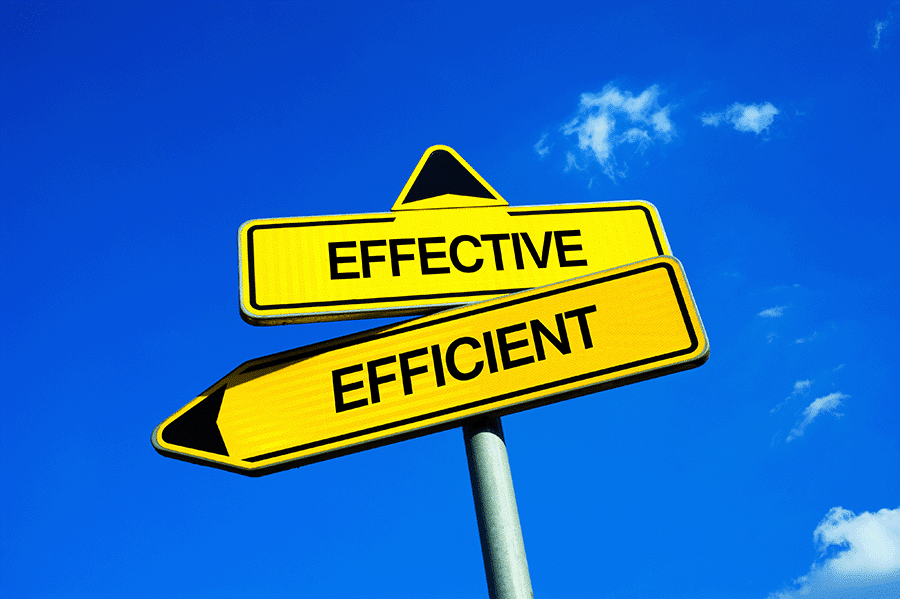A sleek, powerful race car roars down the track, engine screaming, ready to conquer the race. But as it takes the first turn, it skids out of control. Without tires on the wheels, it’s just a metal chassis sliding aimlessly. No matter how powerful the engine or how aerodynamic the design is, it will fail without those tires gripping the asphalt. That’s efficiency without effectiveness.
Effectiveness first and efficiency second. It seems slower, but it’s the sure path to success. Efficiency can improve a sound system, but effectiveness can turn a failing one around. Start by making sure what you do works well. Only then, make it work faster. That’s how you avoid sacrificing quality for speed.
That’s abstract, but it applies to ALL businesses. I’ll illustrate the principle with an example from plumbing.
Your plumbing team is top-notch, but they leave messes behind. No amount of improved scheduling or sales training will fix that. The key is to make sure your team is effective—prompt, professional, thorough. Only then will improving your scheduling efficiency make a difference.
Or your plumbing company decides to save costs by optimizing supply purchases. You buy in bulk and streamline inventory management. Yet customer satisfaction doesn’t improve because your plumbers still don’t communicate well with clients and never seem to arrive on time. Only after you improve customer service does the efficiency in supply management start to matter.
Be sure that every improvement benefits your business.
Prioritize effectiveness over efficiency. Make that part of your strategy, and watch the difference it makes. You don’t want a race car built for speed but missing tires — it will just slide around with nowhere to go. This applies to your business; don’t waste time on efficiency before you’ve figured out effectiveness.
- AI Turns Choices Into Decisions, Especially For “Boring” Businesses - November 19, 2025
- From Maps to Memorability: Local SEO Will Bury the Unprepared - October 22, 2025
- The Most Powerful Part of Your Story Is the One You Don’t Tell - May 14, 2025

